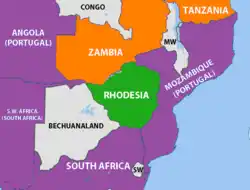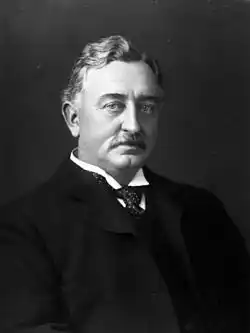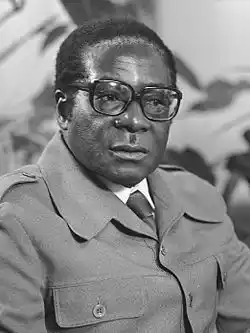
The Rhodesian Bush War was a war which was fought primarily between the white-minority government of Rhodesia (modern-day Zimbabwe) and the forces of the Zimbabwe African National Union (ZANU) between 1964 and 1979. The war began as the white supremacist government of Ian Smith tried to establish a similar political system to the Apartheid state that the White Afrikaner community had developed in South Africa in the late 1940s. This, combined with Rhodesia’s unilateral declaration of independence from Britain in 1965, fuelled a growing conflict between white Rhodesians and the black majority. The conflict was a more low-level one in the 1960s and the white Rhodesian population actually continued to grow until the mid-1970s. A more intense conflict from the mid-1970s eventually ended in the overthrow of the white minority and the eventual rise to power of Robert Mugabe in the early 1980s. His government introduced highly discriminatory policies against the white population in retaliation and the white Zimbabwean population today is miniscule.[1]
Rhodesian Bush War chronology of eventsRhodesian Bush War chronology of events

The Rhodesian Bush War occurred as the British colony of Southern Rhodesia moved towards independence in the 1960s. The colony formed part of the huge block of lands that the British South Africa Company, led by the ideologue of British imperialism in late nineteenth-century Africa, Cecil Rhodes, had colonized from the late 1880s onwards. These eventually came to be known as Northern Rhodesia and Southern Rhodesia, two regions approximating with modern-day Zambia and Zimbabwe. The white settler population in Northern Rhodesia was quite small and in 1964 it transitioned relatively peacefully to black-majority rule during the era of African decolonization. The situation was different in Southern Rhodesia. A substantial white settler population had developed here and they would fiercely resist calls to share power, leading to the outbreak of the Rhodesian Bush War.[2]
The exact point at which the Rhodesian Bush War broke out is debated. Some place it to the summer of 1964 when the first violence erupted. Others argue that it began when the white-minority leader, Ian Smith, and his faction within Southern Rhodesia unilaterally declared their independence from Britain in November 1965. They renamed the state simply as Rhodesia and Smith, who was already the Prime Minister of the colony, continued as the first leader of independent Rhodesia. The war that was developing involved numerous factions, though the largest ones were the white-minority government led by Smith, the Zimbabwe African National Union (ZANU) that came to be led by Robert Mugabe and the Zimbabwe People’s Revolutionary Army (ZIPRA) of Joshua Nkomo.[3]

The war occurred in two stages. It was a more limited conflict between the mid-1960s and the early 1970s, with a guerrilla campaign being waged by ZANU and ZIPRA from the African bush or undeveloped countryside. Rhodesia was left increasingly isolated on the world stage as a result of its unilateral declaration of independence in 1965 and its prosecution of the war, which included the use of biological and chemical weapons in the 1970s, notably chemical and biological agents and compounds associated with anthrax and diseases such as cholera and typhus.[4] It did obtain aid from the Apartheid government in South Africa and the Portuguese in neighboring Mozambique. Still, as ZANU and ZIPRA expanded and intensified their campaign in the mid-1970s the situation became untenable for the relatively small white settler population and peace talks were entered into.[5]
The Rhodesian Bush War effectively came to an end with the signing of the Lancaster House Agreement in London on the 21st of December 1979. This provided for elections to be held in a country now to be known as Zimbabwe Rhodesia, ones in which black-majority candidates would be allowed to stand. A ceasefire was imposed as a result. A compromise candidate, Bishop Abel Muzorewa, became the first and only president of Zimbabwe Rhodesia. However, not long afterwards Robert Mugabe became the new leader and the country’s name was changed to Zimbabwe. He would rule for the next 37 years and ZANU-PF established a highly corrupt government, one which engaged in efforts to deprive the white settler population of their lands. Smith headed into exile and lived out the remainder of his life in South Africa.[6]
Extent of migration during and after the Rhodesian Bush WarExtent of migration during and after the Rhodesian Bush War

The era of the Rhodesian Bush War witnessed a very peculiar ebb and flow of migration. At the beginning of it in the mid-1960s, the white population of Rhodesia was around 220,000. This was in a country of approximately 4.2 million people. Aware that the white population faced a difficult task in maintaining control over the country if it continued to only constitute 5% of the total population, Smith’s government began a campaign to encourage Europeans and other white people to come to Rhodesia and settle there. Thus, during the first decade of the Rhodesian Bush War, despite the ever-increasing levels of violence in the country, the white population grew significantly. Inward migration saw it peak at just over 300,000 in 1975.[7]
However, this changed markedly in the years that followed. By the end of the 1970s many white Rhodesians or newcomers who had spent a few years in the country began to leave as it became apparent that the days of white-minority rule were coming to an end. By the time the war ended in 1979 the white population had fallen to 240,000. It would continue to fall as black-majority rule was established and particularly so after Mugabe and ZANU came to power in 1982 and introduced discriminatory policies against white landowners.[8]
Demographic impact of the Rhodesian Bush WarDemographic impact of the Rhodesian Bush War
The long-term impact of the Rhodesian Bush War has been to bring about a complete collapse in the white population of Zimbabwe. Already by 1985 the white community had shrunk to 100,000 as white Zimbabweans left the country. After this initial mass exodus, a core of white settlers who were determined to remain and retain their position in Zimbabwe was left. Many held firm against prejudicial government policies, but a steady stream of emigration continued. By 1995 there were around 70,000 white Zimbabweans left, while that figure fell to below 50,000 early in the twenty-first century and collapsed to less than 20,000 in the mid-2010s. Thus, while white Rhodesians always constituted a minority of just 5% in the country where they held complete power in the 1960s and 1970s, the white community is virtually non-existent today, a long-term result of the Rhodesian Bush War and the political changes which it ushered in.[9]
See alsoSee also
Explore more about the Rhodesian Bush WarExplore more about the Rhodesian Bush War
- Zimbabwe at South African History Online
- Long Ignored: The Use of Chemical and Biological Weapons Against Insurgents at War on the Rocks
- The Lancaster House Agreement 40 Years On at Gov.UK
- Lessons from the Rhodesian Bush War at Georgetown Security Studies Review
References
- ↑ John Frame, The Rhodesian Civil War (1966–1979) (London, 2018).
- ↑ https://www.sahistory.org.za/place/zimbabwe
- ↑ Thomas Arbuckle, ‘Rhodesian Bush War Strategies and Tactics: An Assessment’, in The Royal United Services Institution Journal, Vol. 124 (1979), pp. 27–33.
- ↑ https://warontherocks.com/2017/08/long-ignored-the-use-of-chemical-and-biological-weapons-against-insurgents/
- ↑ Filipe Ribeiro de Meneses and Robert McNamara, ‘The Last Throw of the Dice: Portugal, Rhodesia and South Africa, 1970–74’, in Portuguese Studies, Vol. 28, No. 2 (2012), pp. 201–215.
- ↑ https://history.blog.gov.uk/2019/12/23/the-lancaster-house-agreement-forty-years-on/
- ↑ Josiah Brownell, The Collapse of Rhodesia: Population Dynamics and the Politics of Race (London, 2011).
- ↑ https://time.com/archive/6882578/zimbabwe-rising-racial-tensions/
- ↑ https://www.zimstat.co.zw/wp-content/uploads/Demography/Census/2022_PHC_Report_27012023_Final.pdf

